One of the fundamental differences between low handicap players and a high handicap players is the ability to contact the ground in the right spot, consistently, every time. The article today is going to cover this topic which arises almost every week on the lesson tee. We’re going to look at exactly what Attack Angle and Low Point is in the golf Swing, what you need to know about it and why you need to know it. Often just getting a grasp on the right concept alone can have the potential to transform a player’s game.
Let’s Start with Some Definitions!
Angle of Attack (AOA)
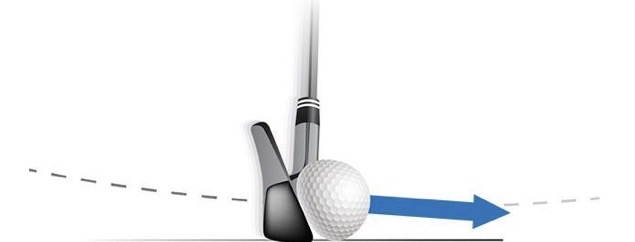
Angle of Attack is the up or down movement of the club head at the time of maximum compression (impact). On Trackman a positive number would mean the clubhead is travelling up, and a negative number would mean the club head is travelling down.
Low Point
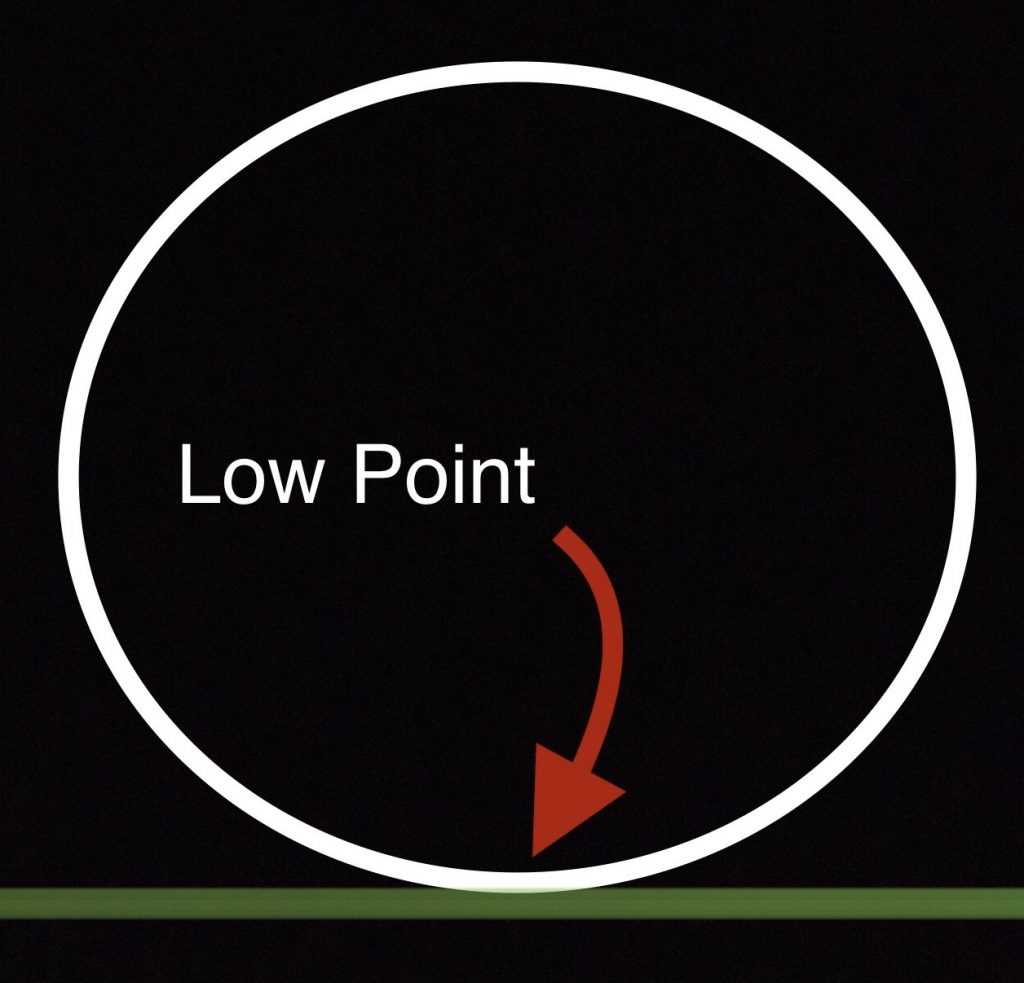
If you imagine that the club swings around your body in a circle, the Low Point is simply the lowest point of this circle or arc at the bottom of the swing in relation to the maximum point of compression (impact).
The Low point can either be Before impact or after it. On Trackman it reads ‘A’ for After and ‘B’ for Before-
How can this help my game?!
The reason we need to know and understand these two factors is because they are responsible for some of the most common reasons a player comes for a lesson!
- Hitting the ground before the ball
- Hitting the ball from the bottom of the club face- Thin Strike, Low trajectory, runs forever!
- Lacking distance with the driver
Do any of these sound familiar?
Believe it or not, all of these issues can be improved by understanding and adjusting your Angle of Attack and Low Point awareness.
Lets Get Into It!
Heavy and Thin Strikes
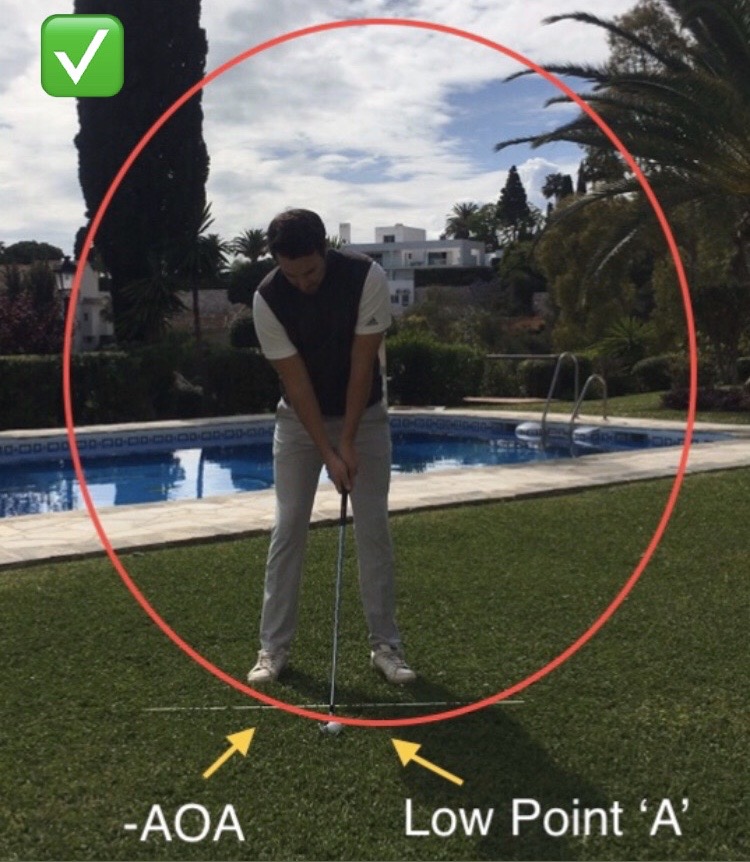
Whenever the ball is on the ground, the players low point must be after the ball which will mean the angle of attack will need to be somewhere in the range of a negative number at impact. The reason I’m using both references is sometimes visualising the low point can be easier than visualising angle of attack. I’ve included some cool visuals here of where we want the low point.
Having the AOA slightly down and low point after the point of impact is important as it will create optimal conditions to land the sweet spot right on the ball and create that clean strike we’re all after!

If you struggle with heavy or thin strikes it means your low point is before the ball and your attack angle is more than likely positive. See the image for the visual- Moving your low point forward and creating a slightly downward AOA needs to be your goal!
Believe it or not, heavy and thin shots largely both stem from a low point which is before the ball and an attack angle which is positive at the moment of impact. How the player attempts to react and compensate will depend if the shot comes out heavy or thin- The root cause for both shots however, is the same!
Loss of Distance with the Driver
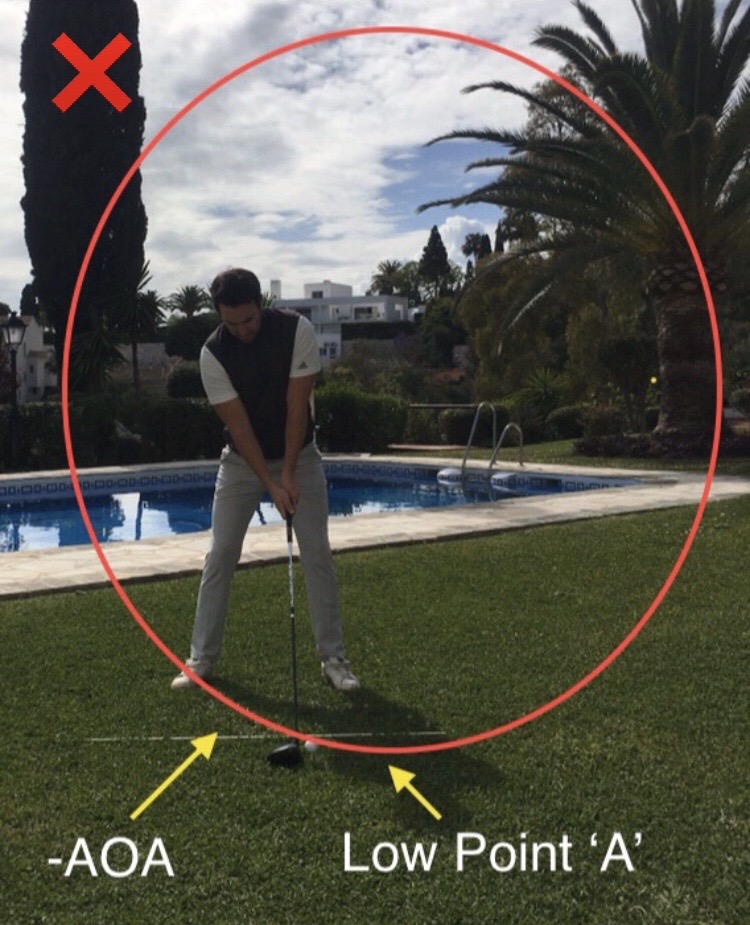
Creating an attack angle which is optimal for your club head speed is critical for optimising carry distance off the tee. An attack angle which is excessively negative and a low point which is after the ball is by far the most common mistake when it comes to the driver. (See Image) It can create poor launch conditions and cost you a lot of yards off the tee. You may have even ‘Skyed’ a your driver too? (We’ve all done it at some stage, even Tiger!) This again is due to the attack angle being too negative and the low point too far in front of the ball.
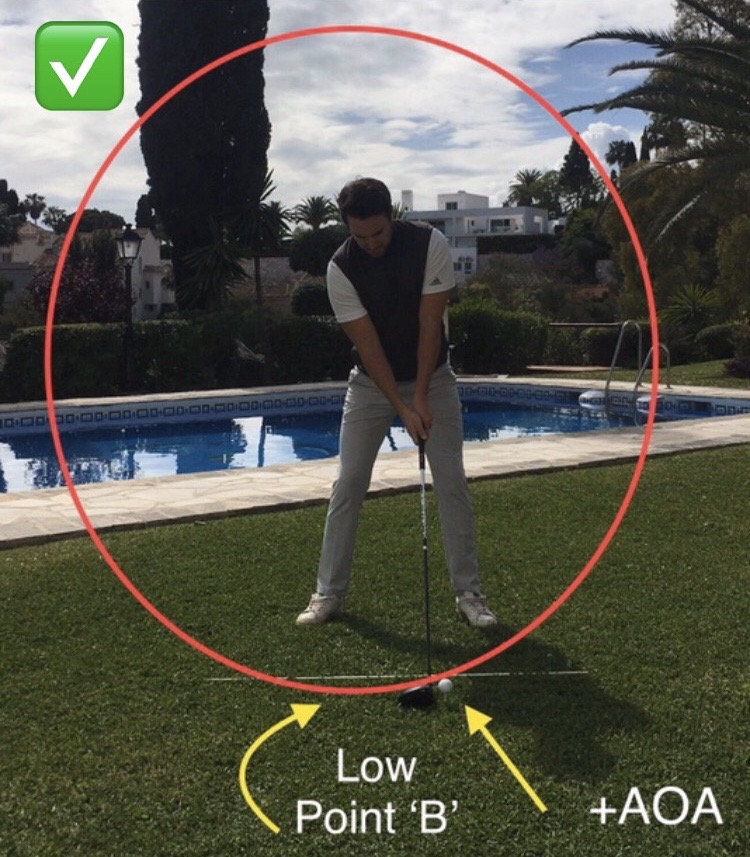
This image represents a great visual for what we want to achieve with the driver. Notice how the low point and AOA differs from shots hit from the ground.
Here are some of the averages from the best players in the world.
Angle of Attack Tour Averages
| Club | PGA Tour AOA in Degrees | LPGA Tour AOA |
| PW | -5 | -3 |
| 6iron | -4 | -2 |
| Driver | -1 | +3 |
Low Point Tour Averages
| Type of Shot | Low Point- Both PGA and LPGA Tours |
| Any Shot where the ball is on the ground | After the ball |
| Off the tee with a driver | Before or after the ball (Depending on Club head Speed) |
Key Takeaways from the Tour Players
You’ll notice that the attack angle is always negative and the low point is always after the ball on shots hit from the ground for both men and women. The amount however can vary slightly. The reason I wanted to make this comparison is to highlight that there is no one perfect attack angle. However, it must be within the correct range for the club and shot being used to achieve the desired outcome. You may also notice that the average attack angle for men with the driver is -1 and the women is +3.
Remember, these are averages, not all players on the PGA Tour Hit down on the driver and Visa Versa for the LPGA Tour. For example arguably one of the best drivers of the ball ever, Rory Mcilroy, hits up sometimes +5 degrees!
The differences in the averages between both tours is largely due to the differences in club head speed.
Speed and Angle of Attack.
The average club head speed on the PGA Tour is higher than the LPGA Tour. Generally, a player with more club head speed can afford to have a slightly negative attack angle with the driver. What I mean by afford is, they will have no loss in optimising distance and carry. The ball flight does not suffer. On the other hand, a player with slower club head speed will sacrifice carry and distance if their attack angle is negative. Matching the correct attack angle to the player to achieve optimal flight conditions will depend on that players club head speed. So in summary, like a lot of things in golf, it depends.
Rule of thumb!
Most players will optimise carry and distance by learning to hit up on the driver. Remember, you can also think of this as getting the low point before the ball.
Lets summarise and gather some thoughts…
- The main goal for this article is to provide a clear concept and visual understanding of what the angle of attack and low point are, and what they need to do in order to create the shots we’re looking for. Hopefully I’ve done that for you!
- We’ve highlighted three common problems that many golfers suffer from and discovered that all of these problems point to to AOA and Low point control and awareness
- Visually we have a clear idea of the differences between what the club needs to be doing with shots hit from the ground and shots played off the tee (Driver).
- We also know that there’s no specific number that works for everyone, however there is ranges that we simply must hit in order to strike the ball to our fullest potential.
How to fix it!
There are many reasons as to why these factors can be inefficient. It can be a concept, technique or a skill problem. So far, hopefully I have ruled out one possible cause, the correct concept! The correct idea can sometimes be all that’s needed, sometimes.
Fixing a players technique with regards to the AOA and Low Point will always be specific to the player. However there are some common faults that show up which can be seen in both pre and in swing principles that have a direct relationship with AOA and low point control. This we’ll have to get to in another article- We’ve covered lots today already!
In the mean time if you are struggling with any of the strike problems I outlined in this article, don’t forget you can always reach out to me at any time. An evaluation of your swing will mean I can tailor the drills so that they are specific to you, no guesswork, just results.
Speak soon,
Coach

Declan
Phillip Tanham